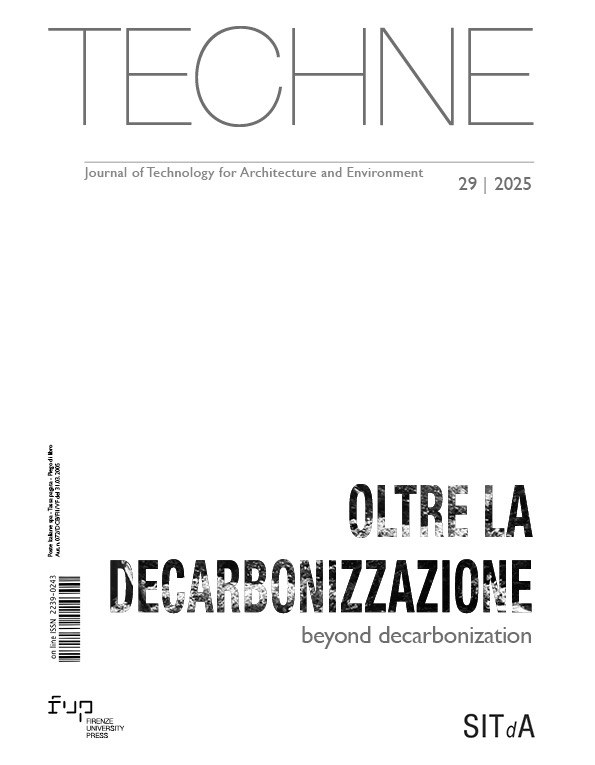Published 2025-07-31
Keywords
- Urban Food Production,
- AI,
- GIS,
- Co-Production,
- Urban Innovation
How to Cite
Copyright (c) 2025 Aysegul Ozbakir Acimert, Matthew Hexemer, Derek Chezzi, Soundharya Shivamadaiah, Dhruvkumar Patel, Derek Schmucker

This work is licensed under a Creative Commons Attribution 4.0 International License.
Abstract
Food Insecurity is worsening due to climate change, and agriculture contributes to an estimation of 37% of global GHG emissions. Food loss and waste related activities emitted 9.3 Gt of CO2-e in 2017, which accounted for about half of the global annual emissions from the whole food system. Although many policies have been designed, it is still unclear how cities can do their part. The objective of this paper is to introduce a data-driven and sustainable urban food service design that extends beyond decarbonisation, namely ‘City Harvest’. Integrated design elements at neighbbourhood scale are: a. soil-based vertical farming structures; b. residential indoor growing kits that also process organic waste; c. AI and Web-GIS-based knowledge platform for community co-creation activities.
Downloads
References
- City of Toronto, (2017), Food Insecurity Report. Available at: https://www.toronto.ca/legdocs/mmis/2017/hl/bgrd/backgroundfile-107929.pdf.
- Cummins, S. and Macintyre, S. (2002), “Food deserts – evidence and assumption in health policy
- Making”, The BMJ, Vol.325, pp.436-438, Available at: https://doi.org/10.1136/bmj.325.7361.436. DOI: https://doi.org/10.1136/bmj.325.7361.436
- Gonzales, P. (2012), Have food deserts turned into food swamps?, Berkeley Media Studies Group, Available at: https://www.bmsg.org/have-food-deserts-turned-into-food-swamps/.
- Harper, S. L., Schnitter, R., Fazil, A., Fleury, M., Ford, J., King, N., Lesnikowski, A., McGregor, D., Paterson, J., Smith, B., and Neufeld, H. T. (2022), “Food Security and Food Safety”, in Berry, P. and Schnitter, R. (Eds), Health of Canadians in a Changing Climate: Advancing our Knowledge for Action, Ottawa, Government of Canada.
- Igini, M. (2023), Top 7 Vertical Farming Companies in the World, Available at: https://earth.org/vertical-farming-companies/.
- Lovell, A. (2022), Quebec leads indoor urban agriculture trend, Country Guides News, Available at: https://www.country-guide.ca/news/quebec-leads-indoor-urban-agriculture-trend/ (Accessed on 09/09/2023).
- Mbow, C., Rosenzweig, C., Barioni, L., Benton, T., Herrero, M., Krishnapillai, M., and Xu, Y. (2019), “Food security”, in Shukla, P., Skea, J., Calvo Buendia, E., Masson-Delmotte, V., Pörtner, H.O., Roberts, D.C., Malley J. (Eds), Climate Change and Land: an IPCC special report on climate change, desertification, land degradation, sustainable land management, food security, and greenhouse gas fluxes in terrestrial ecosystems. Available at: https://www.ipcc.ch/srccl/.
- Myers, S.S., Smith, M.R., Guth, S., Golden, C.D., Vaitla, B., Mueller, N.D. and Huybers, P. (2017), “Climate change and global food systems: potential impacts on food security and undernutrition”, Annual Review of Public Health, Vol. 38, pp. 259-277. Available at: https://doi.org/10.1146/annurev-publhealth-031816-044356. DOI: https://doi.org/10.1146/annurev-publhealth-031816-044356
- Negrello, M. (2024), “Indoor urban agriculture: from innovative design experimentation to standardisation”, TECHNE – Journal of Technology for Architecture and Environment, Vol. 27, pp. 81-88. Available at: https://doi.org/10.36253/techne-15136. DOI: https://doi.org/10.36253/techne-15136
- Orsini, F. (2022), “Food Vertigo. Processes and devices for metropolitan food resilience”, TECHNE – Journal of Technology for Architecture and Environment, Vol. 23, pp. 104-116. Available at: https://doi.org/10.36253/techne-12139. DOI: https://doi.org/10.36253/techne-12139
- Shaw, J. (2003), The Ecology of Food Deserts (PhD Thesis), The University of Leeds School of Geography.
- Stahlbrand L. and Roberts W., (2022), “Critical Food Guidance in Action: The History of the Toronto Food Policy Council”, Canadian Food Studies, Vol. 9, n.1, pp.69-86. DOI: https://doi.org/10.15353/cfs-rcea.v9i1.505
- Todd J. and Todd N., (1994), From Eco-Cities to Living Machines: Principles of Ecological Design, North Atlantic Books.






